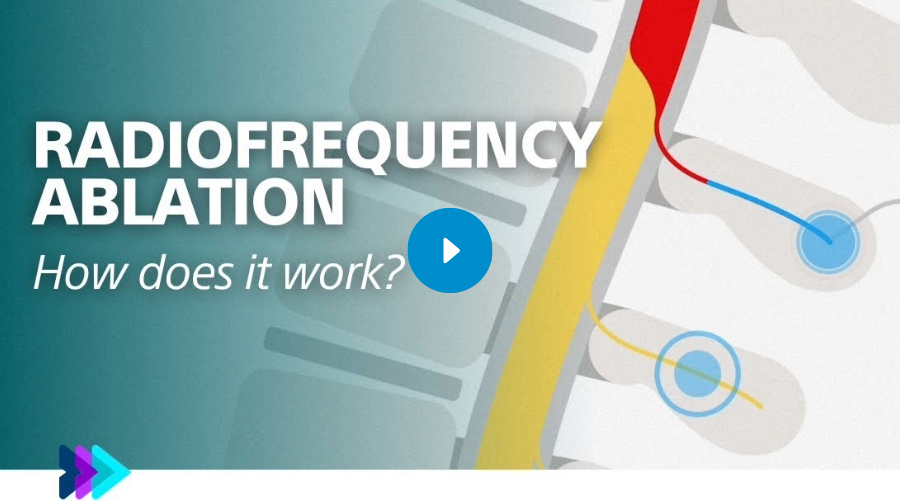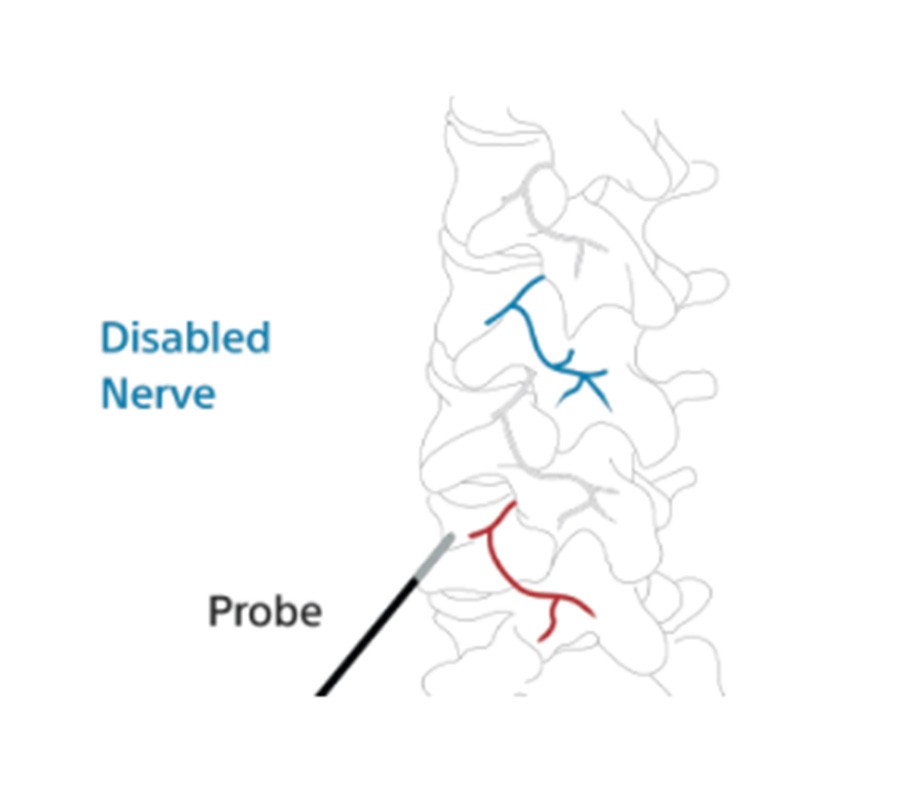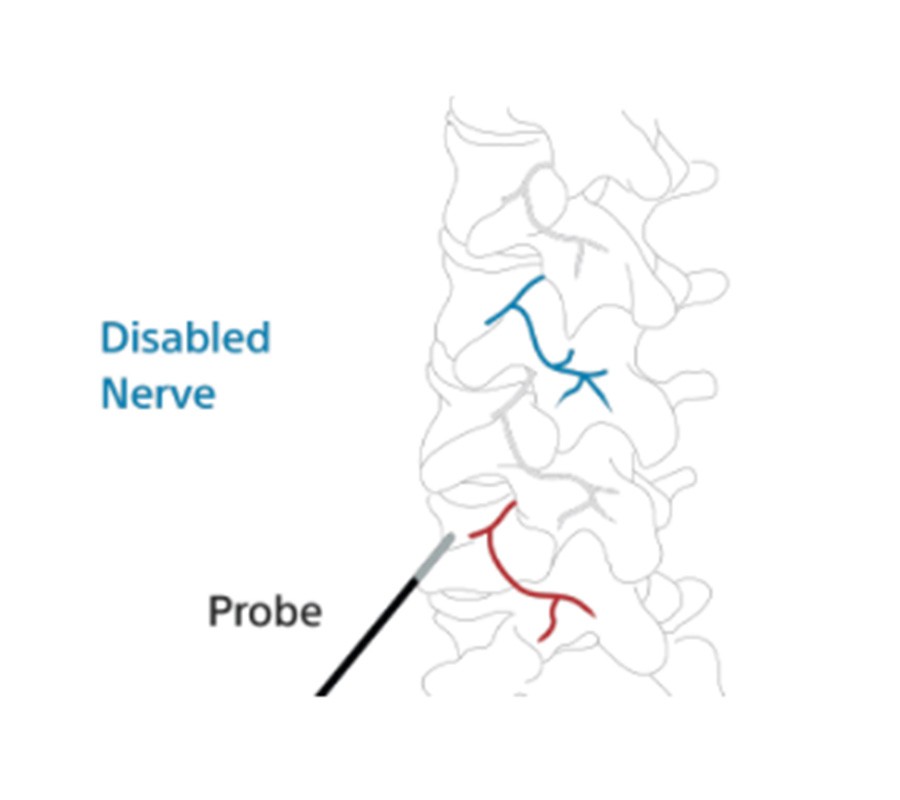What are the treatment options?
The treatment option that will work best for you depends on your type of pain, how severe it is, and how you respond to pain treatment. The fact is, only a doctor can determine if you are a good candidate for various pain treatment options.
- Conservative options include over-the-counter medications and physical therapy.
- Powerful prescription drugs can also be prescribed, but they can carry the twin dangers of addiction and a diminished ability to function.
- Invasive surgeries like spinal operations are another choice, but the recovery time is long.
- Interventional pain treatments can provide long-term pain relief. They are less invasive and have a quicker recovery time than most surgical procedures. Radiofrequency Ablation (RFA) and Spinal Cord Stimulation (SCS) are interventional pain treatments.
What is Radiofrequency Ablation (RFA)?
Radiofrequency Ablation (RFA) is a well-established, drug-free pain management solution that is clinically proven to provide safe, effective relief from pain. RFA is a simple, minimally invasive outpatient procedure that uses thermal energy to interrupt pain signals at their source. RFA can be used to treat pain in the back, hips, knees, shoulders, feet, and neck, and can provide months – or even years – of relief. Studies show that more than 70% of patients treated with RFA experience relief–lasting anywhere from 6 to 12 months, and in some cases, years.1-3

What is Spinal Cord Stimulation (SCS)?
SCS therapy can help manage Chronic Pain by using mild electrical impulses to interrupt pain signals. While SCS is leading-edge technology, it’s not as complicated as it seems. Your nerves and brain are constantly communicating with each other. And when you feel pain, it’s because those nerves are sending a pain signal to your brain. That’s where SCS therapy comes in – SCS masks the pain signals coming from your lower back or legs from reaching your brain.4
SCS therapy has helped hundreds of thousands of people5 and is:























